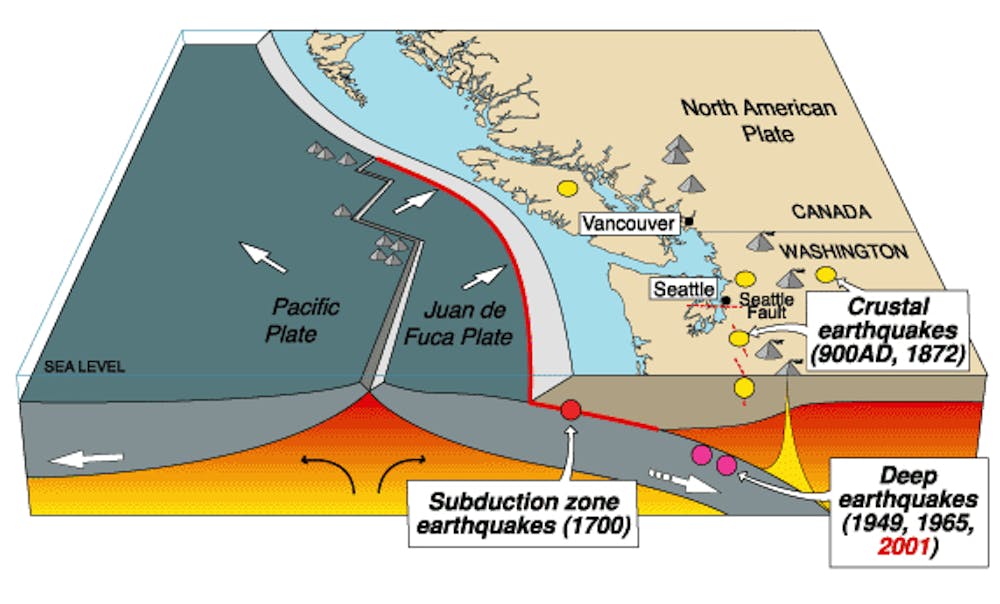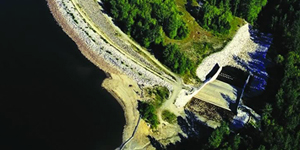Hyperlinked
to my material at:
Kulshan Stratovolcano© / Mount Baker Stratovolcano©, An Intelligent Grandfather's Guide©
BAKER LAKE AT UPPER BAKER DAM NEAR CONCRETE, WA WaterAlert service
https://youtu.be/RimhzRgPtB0 [2:47 minutes]
Errata: References via Wikipedia: Seattle City Light (erroneously referenced in voice-over in the video as Seattle Light and Power). should be Puget Sound Energy (PSE), with headquarters in Bellevue, Washington. It is the operator Baker River Hydroelectric Project on the Baker River, generating 170 MW of electricity. It is a Washington state energy utility providing electrical power and natural gas primarily in the Puget Sound region of the northwest United States. The utility serves electricity to more than 1.1 million customers in Island, King, Kitsap, Kittitas, Pierce, Skagit, Thurston, and Whatcom counties; and provides natural gas to 750,000 customers in King, Kittitas, Lewis, Pierce, Snohomish and Thurston counties. The company has a 6,000-square-mile (16,000 km2) electric and natural gas service area. It is a private company head quarts in Bellevue (/ˈbɛlvjuː/ BEL-vyoo) is a city in the Eastside region of King County, Washington, United States, across Lake Washington from Seattle. As the third-largest city in the Seattle metropolitan area, Bellevue has variously been characterized as an edge city, a suburb, boomburb, or satellite city.[6][7] Its population was 122,363 at the 2010 census[8] and 147,599 in a 2018 census estimate.
Kulshan Stratovolcano© / Mount Baker Stratovolcano©, An Intelligent Grandfather's Guide©
Is Mount Baker a hazard for Canada? - Perspective From Natural Resources Canada
How might ash from a Mount Baker eruption affect Canada? ... Explosive eruptions of Mount Baker that generate volcanic ash have been less frequent than at other Cascade volcanoes, but they still pose a potential hazard. A large explosive eruption is unlikely.
BAKER LAKE AT UPPER BAKER DAM NEAR CONCRETE, WA WaterAlert service
| The U.S. Geological Survey WaterAlert service sends e-mail or text (SMS) messages when certain parameters, as measured by a USGS real-time data-collection station, exceed user-definable thresholds. The development and maintenance of the WaterAlert system is supported by the USGS and its partners, including numerous federal, state, and local agencies. Real-time data from USGS gages are transmitted via satellite or other telemetry to USGS offices at various intervals; in most cases, 1 to 4 times per hour. Emergency transmissions, such as during floods, may be more frequent. Notifications will be based on the data received at these site-dependent intervals. |
Errata: References via Wikipedia: Seattle City Light (erroneously referenced in voice-over in the video as Seattle Light and Power). should be Puget Sound Energy (PSE), with headquarters in Bellevue, Washington. It is the operator Baker River Hydroelectric Project on the Baker River, generating 170 MW of electricity. It is a Washington state energy utility providing electrical power and natural gas primarily in the Puget Sound region of the northwest United States. The utility serves electricity to more than 1.1 million customers in Island, King, Kitsap, Kittitas, Pierce, Skagit, Thurston, and Whatcom counties; and provides natural gas to 750,000 customers in King, Kittitas, Lewis, Pierce, Snohomish and Thurston counties. The company has a 6,000-square-mile (16,000 km2) electric and natural gas service area. It is a private company head quarts in Bellevue (/ˈbɛlvjuː/ BEL-vyoo) is a city in the Eastside region of King County, Washington, United States, across Lake Washington from Seattle. As the third-largest city in the Seattle metropolitan area, Bellevue has variously been characterized as an edge city, a suburb, boomburb, or satellite city.[6][7] Its population was 122,363 at the 2010 census[8] and 147,599 in a 2018 census estimate.
As of 2019, the city promotes itself as a diverse, global city at the heart of Seattle's Eastside, and home to some of the world's most innovative technology companies. Prior to 2008, downtown Bellevue underwent rapid change, with many high-rise projects under construction, and was relatively unaffected by the economic downturn. The downtown area is currently the second largest city center in Washington state, with 1,300 businesses, 45,000 employees and 10,200 residents.[9] Based on per capita income, Bellevue is the 6th wealthiest of 522 communities in the state of Washington.[10] In 2008, Bellevue was named number 1 in CNNMoney's list of the best places to live and launch a business,[11] and in 2010 was again ranked as the 4th best place to live in America.[12] In 2014, Bellevue was ranked as the 2nd best place to live by USA Today.[13] More than 145 companies have been located in Bellevue. Current companies with headquarters in Bellevue include Expedia, PACCAR Inc, T-Mobile and Valve Corporation.
The name "Bellevue" is derived from the French words for "beautiful view".[14]
The main campus for the Microsoft headquarters is located in Redmond, Washington. The headquarters is home to thousands of workers. Of the 59,000 employees in the United States, more than 42,000 call Washington state home.















